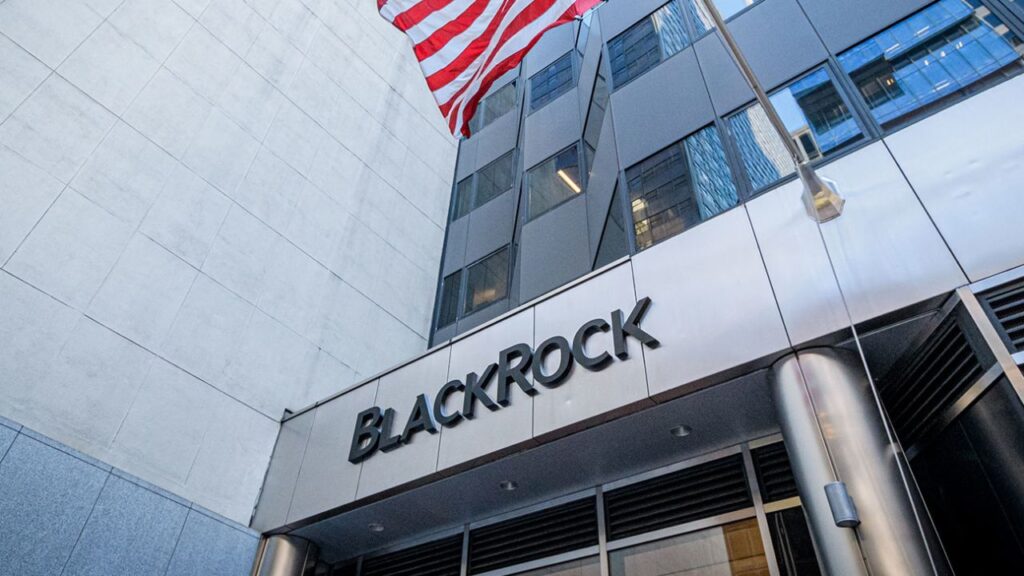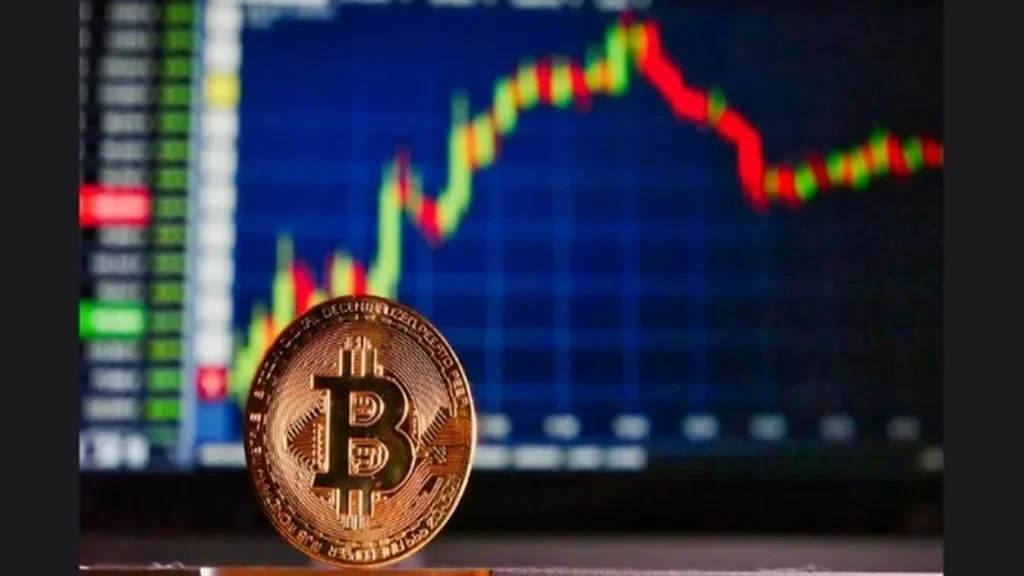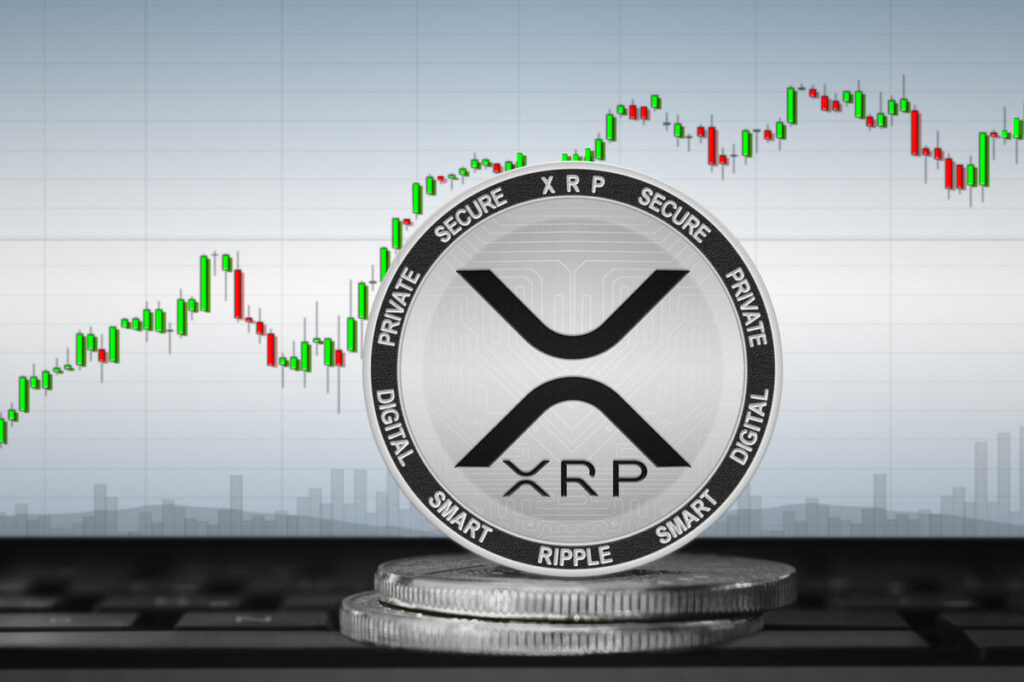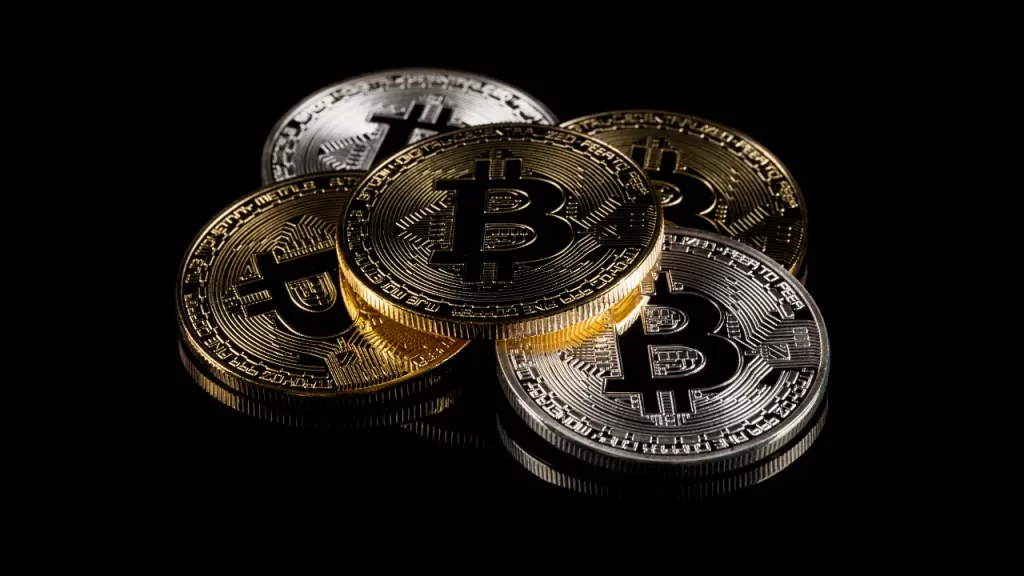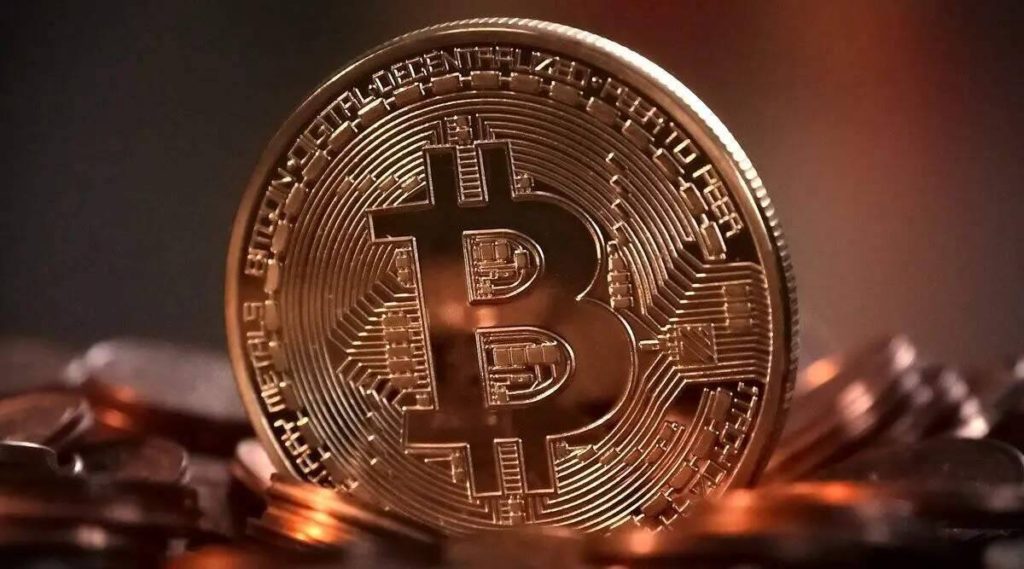BlackRock’s Bitcoin exchange-traded fund (ETF) now commands a significant 50.4% share of the total U.S. Bitcoin ETF market. The asset management giant currently holds over $56.8 billion worth of Bitcoin, contributing to a combined total of $112 billion managed by all U.S. Bitcoin ETF issuers, according to Dune data.
Bitcoin ETFs Face Sell-Off
Despite BlackRock’s dominance, the overall Bitcoin ETF market has experienced a three-day selling streak. On February 20, Bitcoin ETFs saw cumulative net outflows of $364 million, with BlackRock’s iShares Bitcoin Trust ETF (IBIT) accounting for $112 million, as per Farside Investors data.
Bitcoin’s Price Remains Resilient
Despite ETF outflows, Bitcoin’s price has remained relatively stable, climbing back above $99,300 on February 21.
Marcin Kazmierczak, co-founder of RedStone, believes that ETFs are not the primary force driving Bitcoin’s price movements.
“This indicates that other forces — such as broader market liquidity, institutional accumulation, or macroeconomic trends — are also at play,” he told Cointelegraph.
Price Action Raises Concerns
While Bitcoin has shown resilience, some experts worry about prolonged range-bound trading. Samson Mow, CEO of Jan3, suggested the price movement may be manipulated.
“It seems like it’s some sort of price suppression,” Mow stated at Consensus Hong Kong 2025, adding that Bitcoin’s price has been peaking and then moving sideways in an unnatural manner.
Bitcoin bulls pushed the price close to $100,000 at the Wall Street open on February 21, reaching $99,500 on Bitstamp.
However, a pattern of selling pressure emerged as U.S. markets opened, contrasting with gains seen in Asia and Europe.
Market Liquidity and Resistance Levels
Trading resource Material Indicators noted shifting liquidity dynamics as Bitcoin recovered from a recent dip. “Whether this develops into a bull trap or a bonafide breakout remains to be seen,” analysts stated, emphasizing the importance of the $100K resistance level.
Traders Weigh In on Bitcoin’s Future
Popular trader CRG observed that bears were attempting to cap gains at a key midpoint in Bitcoin’s multimonth trading range. Meanwhile, Rekt Capital highlighted a bullish divergence forming on Bitcoin’s Relative Strength Index (RSI), suggesting potential upside momentum.
U.S. Dollar Weakness Provides Tailwind
Bitcoin and other risk assets received support from a weakening U.S. dollar, with the U.S. Dollar Index (DXY) dropping to 106.38, its lowest level since December 2024. Analysts believe this could provide a favorable environment for further Bitcoin gains.
Cryptocurrency exchange Bybit has reportedly lost over $1.4 billion in liquid-staked Ether (stETH) and MegaETH (mETH) in a massive hack, according to on-chain security analyst ZackXBT.
Bybit co-founder and CEO Ben Zhou confirmed that the breach involved an unauthorized transfer from the exchange’s multisignature wallet to a warm wallet. The transaction was disguised as legitimate but contained malicious code that altered the smart contract logic, allowing funds to be siphoned off.
Zhou reassured users, stating, “Please rest assured that all other cold wallets are secure. All withdrawals are NORMAL. I will keep you guys posted as more develops.”
Rising Security Threats in Crypto
The hack adds to a growing list of security breaches in the crypto industry, which has seen an uptick in attacks throughout 2024 and early 2025. Security experts have urged users to blacklist addresses linked to the exploit to prevent further losses.
Brazil has taken a significant step in cryptocurrency adoption with the approval of its first spot XRP exchange-traded fund (ETF). The country’s securities regulator, the Comissão de Valores Mobiliários, gave the green light to the Hashdex Nasdaq XRP Index Fund on February 19.
Brazil Welcomes XRP ETF
While an official launch date for trading on Brazil’s B3 exchange has yet to be confirmed, fund manager Hashdex has promised further details soon. Hashdex already offers a variety of crypto ETFs in Brazil, covering Bitcoin, Ethereum, Solana, as well as funds focused on DeFi, Web3, and the metaverse.
This development comes as the U.S. Securities and Exchange Commission (SEC) acknowledged several spot XRP ETF applications from Nasdaq and Cboe BZX, submitted on behalf of CoinShares, Canary Capital, and WisdomTree.
XRP Price Reaction and Market Impact
Following the ETF announcement, XRP surged by 7.8%, reaching $2.72. The token is now just 20% shy of its all-time high, demonstrating renewed investor confidence.
Braza Bank Introduces Real-Pegged Stablecoin on XRPL
In parallel with the ETF approval, Braza Group is launching BBRL, a stablecoin pegged to the Brazilian real, on the XRP Ledger.
“We are committed to offering a stablecoin that not only meets but exceeds the highest security and compliance standards,” said Marcelo Sacomori, CEO of Braza Group.
Backed by Braza Bank, the stablecoin is expected to roll out to institutional clients initially, with plans to expand to consumer markets by the end of 2025.
Braza Group is also actively involved in Brazil’s DREX initiative, which explores asset tokenization and cross-border payments. According to Brazil’s central bank chief Gabriel Galipolo, nearly 90% of crypto-related transactions in the country are linked to stablecoins, highlighting their growing role in the financial ecosystem.
The Blockchain Association, which represents 76 cryptocurrency organizations, has urged U.S. congressional leaders to support Senator Ted Cruz’s efforts to repeal the IRS’s new decentralized finance (DeFi) broker rule.
Crypto Industry Pushes for Rule Repeal
On February 19, the association sent a letter to key lawmakers, including Senate Majority Leader John Thune, Senate Minority Leader Chuck Schumer, House Speaker Mike Johnson, and House Minority Leader Hakeem Jeffries. The letter called for the repeal of an anti-crypto regulation finalized during President Joe Biden’s administration.
Notable signatories include 0x Labs, a16z Crypto, Aptos Labs, Crypto.com, Grayscale, and Dapper Labs, among others.
Concerns Over Innovation and Compliance Burdens
The IRS’s DeFi broker rule, set to take effect in 2027, expands the definition of a “broker” to include software providers facilitating DeFi transactions. The Blockchain Association supports Cruz’s Congressional Review Act (CRA) resolution, S.J.Res. 3, which seeks to overturn this requirement.
“Under the rule, software companies that never take custody or control of users’ assets will be required to radically rebuild their services in order to unnecessarily collect and then report to the government the personal identifying information and transaction details of potentially tens of millions of American users.”
Industry experts warn that these requirements could stifle DeFi innovation in the U.S., create an undue compliance burden, and weaken the country’s standing in global financial technology. The Blockchain Association has labeled the move as a “midnight rulemaking” attempt and insists that Congress should have the final say on policies with such widespread implications.
Cryptocurrency app downloads in the United Arab Emirates (UAE) have seen a massive uptick in 2024, according to data from app analytics firm AppsFlyer.
The report revealed that downloads of the top 49 crypto apps soared from 6.2 million in 2023 to 15 million in 2024, marking a 41% increase. This surge was particularly prominent in the latter half of 2024, with over 1 million installs per month in the final quarter. December alone recorded a staggering 2.8 million downloads.
Key Drivers Behind the Growth
AppsFlyer attributed this rapid adoption to a combination of favorable market conditions and significant political developments.
On November 6, 2024, Donald Trump secured the U.S. presidential election, which was widely seen as a positive shift for the crypto industry. Trump had vowed to end regulatory crackdowns on digital assets and position the U.S. as the global hub for crypto innovation.
“There has been a strong correlation between these market factors and the UAE’s crypto market momentum,” said Shani Rosenfelder, director of market insights at AppsFlyer.
Trump’s Memecoin and Investor Surge
Adding to the excitement, Trump launched his own memecoin in January 2025, attracting a wave of new investors. According to a survey by NFT Evening, many first-time crypto users entered the market following the launch.
The U.S. crypto app market also experienced a boom, with platforms like Crypto.com, Moonshot, and Coinbase dominating the Apple App Store’s finance category.
However, while Trump’s memecoin drew in fresh investors, a Chainalysis report indicated that 813,000 wallets suffered losses of up to $2 billion after purchasing the token, highlighting the volatile nature of the crypto market.
Coinbase has proposed a significant regulatory shift, advocating for the U.S. Commodity Futures Trading Commission (CFTC) to assume full authority over spot cryptocurrency markets. If implemented, this move would curtail the influence of the Securities and Exchange Commission (SEC) in the sector.
Coinbase’s Legislative Push
Faryar Shirzad, Coinbase’s chief policy officer, recently submitted a proposal to Congress urging swift action on regulatory clarity and consumer protections. His six-point legislative plan includes granting the CFTC full oversight of the crypto spot market.
“Digital assets like Bitcoin and Ethereum are commodities, not securities. Legislation must empower the CFTC to oversee the crypto spot market, ensuring transparency and protecting consumers from fraud and manipulation,” wrote Shirzad.
Balancing the SEC’s Role
While advocating for reduced SEC influence, Coinbase acknowledges the agency’s importance in certain areas. Shirzad suggested that Congress establish SEC rules for capital raising, ensuring blockchain projects have clear funding pathways without all tokens being classified as securities.
Industry Support for CFTC Oversight
Many within the crypto industry and Republican lawmakers support shifting oversight to the CFTC. Notably, Representatives Glen Thompson and Tom Emmer reintroduced the Digital Commodity Exchange Act in 2022 to give the CFTC regulatory authority over digital assets.
Former CFTC Chair Chris Giancarlo has also urged the Senate Agriculture Committee to endorse CFTC oversight. Meanwhile, reports suggest President Donald Trump is considering granting the agency jurisdiction over the sector.
Wresting Control from the SEC
Currently, the SEC regulates spot crypto markets, although it has acknowledged Bitcoin and Ethereum as non-securities. Former SEC Chair Gary Gensler previously argued that most cryptocurrencies fall under SEC jurisdiction due to their structure. However, the agency abandoned an investigation into Ethereum’s status in mid-2024, potentially to avoid further legal setbacks.
With growing political and industry support, the push for CFTC oversight could redefine cryptocurrency regulations in the U.S., providing long-sought clarity to investors and developers alike.
Bitcoin (BTC) could drop as low as $77,000 and still maintain its bullish trajectory in 2025, according to CryptoQuant CEO Ki Young Ju. In a series of posts on February 19, Ju emphasized that a 30% correction would align with historical trends while keeping the uptrend intact.
No Bear Market in Sight
Despite Bitcoin’s sideways price action and failure to reclaim $100,000, Ju remains confident in its long-term growth.
“I don’t think we’ll enter a bear market this year,” he stated, analyzing investor cost bases.
According to Ju, even a drop to $77,000 would not signal a bear market but rather a standard correction within a broader bull cycle.
Key Support Levels and Market Dynamics
Ju highlighted key price levels, including the cost basis of U.S. spot Bitcoin exchange-traded fund (ETF) investors at $89,000, which has served as strong support since November. Other crucial levels include:
- $59,000 – Aggregate breakeven for Binance traders.
- $57,000 – Bitcoin mining companies’ profitability threshold.
Historically, falling below these levels has indicated bear markets, such as in May 2022, March 2020, and November 2018.
Post-Halving Performance Signals More Upside
According to CryptoQuant, Bitcoin’s post-halving performance remains “unfinished.” Contributing analyst Timo Oinonen noted that since the last halving in April 2024, Bitcoin has only gained 60%.
Oinonen expects a potential sell-off in May, followed by a sideways summer and a strong Q4 rally, as seen in past cycles. He emphasized that major corrections could be months or even a year away.
With historical patterns supporting continued bullish momentum, Bitcoin’s long-term outlook remains promising, even in the face of short-term volatility.
Bitcoin’s price action is showing similarities to August 2023, with on-chain data indicating that extreme volatility may be imminent. CryptoQuant’s research suggests that BTC/USD is “ready” for a significant move after a prolonged period of stagnation.
Choppiness Index Signals Incoming Volatility
Bitcoin has been trading within a narrow range with declining volumes, a setup that often precedes a major price movement. CryptoQuant contributor Percival highlighted the Choppiness Index, which currently sits at 62 on the daily chart and 72 on the weekly chart, indicating the need for a directional breakout.
“In 2023, before the uptrend, price cleared all traders of ‘boring’ positions in the opposite direction due to low volatility,” Percival noted. This suggests that another liquidity grab could be on the horizon before a decisive move.
Key Price Levels and Support Zones
Should BTC’s price follow a similar trajectory as August 2023, investors should watch critical support levels. The short-term holder (STH) cost basis at $92,000 is one area of interest, while the 200-day exponential moving average (EMA) at $85,000 serves as a key fallback level.
“The possibility of false moves before the bull run is strong, many breakout traders are positioned in these zones, and the sovereign market tends to blow up these positions and return to the expected course,” Percival concluded.
With traders bracing for a major shakeout, Bitcoin’s next move could define the trajectory of the broader crypto market in the coming months.
FTX Digital Markets, the Bahamian division of the collapsed FTX exchange, is set to issue its first round of repayments to creditors on Feb. 18. This marks a major development in the crypto industry’s recovery following FTX’s near $9 billion collapse.
The exchange’s downfall led to a series of insolvencies and the longest crypto winter in history, with Bitcoin bottoming at $16,000. Now, creditors owed less than $50,000 in claims will receive repayments, marking a critical step toward financial resolution.
$1.2 Billion in Capital Reintroduced to Market
According to Sunil, a member of the FTX Customer Ad-Hoc Committee, the first batch of repayments will amount to an estimated $1.2 billion. This could positively impact market liquidity and investor sentiment.
Bitget Wallet’s COO Alvin Kan noted, “The $1.2 billion repayments may see a significant portion reinvested into cryptocurrencies, potentially impacting market liquidity and prices.”
Controversy Over Repayment Valuation
Despite the positive impact, some creditors have criticized the repayment model, which bases reimbursements on cryptocurrency values from November 2022—when Bitcoin was trading nearly 370% lower than current prices.
Limited Market Impact, But a Victory for Justice
While these repayments may not significantly move the market, they represent an important step toward restoring trust in the crypto industry. Magdalena Hristova, PR manager at Nexo, stated:
“The collapse impacted many investors and cast a shadow over crypto. For retail investors, especially those without diversified portfolios, these repayments offer not just the return of funds but a sense of stability and peace of mind.”



